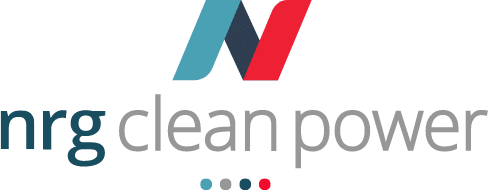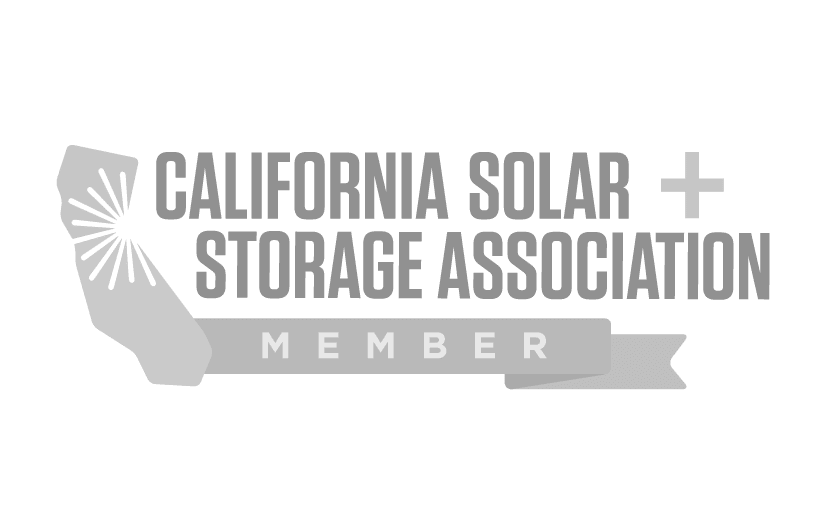Solar energy storage systems are all the rage now, especially for folks looking to take a bit more control over their electricity use and keep things running during power outages.
Did you hear about the federal investment tax credit? It’s now up to 30% off both solar panels and those handy battery storage units. It’s a pretty sweet deal and it’s definitely helping to bump up the popularity of these setups.
And it’s not just a federal thing—states like California, Hawaii, Illinois, Maryland, Massachusetts, and Oregon are throwing in some extra perks to encourage more people to go for battery storage.
What Is A Solar Energy Storage System?
Solar power is pretty awesome, but it has its limits—it’s only available when the sun is shining. That’s where solar energy storage systems come in handy. They let you save that extra sunshine so you can use it whenever you need, day or night.
For folks who live off the grid, batteries are essential. They make sure you’ve got a steady supply of electricity 24/7. And if you’re on the grid but hate the thought of losing power during a blackout, these systems can be a real lifesaver. With a hybrid solar setup that includes batteries, you can keep your home humming smoothly, even when everyone else is in the dark.
Also, in places where electricity costs more during peak hours, having your own storage system can save you a bunch of money. You can store energy when it’s cheap and use it when prices are high. This smart move can really speed up the savings you get from installing solar panels in the first place.
What Are Solar Batteries
Without a means to store the energy produced by solar panels, the efficiency of solar energy would be limited, and appliances would only function when the sun is shining and the panels are active.
To prevent the wastage of unused energy and facilitate nighttime use, solar batteries come into play. Solar batteries serve as an alternative or addition to sending excess energy back to the grid.
They allow for the storage of energy generated by solar panels, making homes or facilities less reliant on the grid, providing some immunity against power outages, and even enabling a move towards off-grid energy consumption.
Why Is Solar Energy Storage Important?
ou know how power outages seem to happen more often these days, especially with the old grid struggling and all those extreme weather events popping up? Sometimes, to avoid wildfires, utility companies even have to shut off power on purpose. That leaves a lot of folks without electricity.
While backup generators are one way to keep the lights on, they’re pretty noisy, they guzzle fossil fuels, and let’s not forget the carbon emissions they pump out.
As they become more affordable, solar batteries are stepping up as a cleaner, quieter alternative to help keep power flowing during blackouts and to store any extra energy we don’t immediately use.
These systems do more than just back up power; they help keep the electricity grid balanced. On sunny days, especially in places with lots of solar panels, we can end up with more energy than we need — this is shown in what’s called the “duck curve.” Instead of wasting this excess, solar energy storage systems save it up for when it’s needed most, like during peak demand times.
Types of Solar Energy Storage
So, solar energy isn’t just about catching some rays. It’s also about storing that energy so we can use it when we need it, day or night. This is where different types of energy storage technologies come into play, and boy, are there a variety!
Some systems are perfect for carrying around—think of using them for camping or in RVs. Others are big setups meant for factories or large buildings that need a lot of juice.
And then there’s the duration thing—some storage systems are like sprinters: quick and powerful but only for a short while. Others are more like marathon runners, holding onto that energy for the long haul to keep things running smooth over time.
Electrical Storage
Let’s talk about what keeps our gadgets going—batteries. You’ve got your classic lead-acid batteries, including those tough sealed AGM ones, and then there are the lithium-ion batteries. Among these, lithium iron phosphate (LFP) and nickel manganese cobalt (NMC) batteries are kind of the celebrities because they’re reliable and pack a good punch.
Chemical Energy Storage Systems
Moving on to a different flavor of storage—chemical energy. This isn’t about storing electricity directly, but about keeping energy locked up in chemical forms. A cool example? Hydrogen gas. We make it through electrolysis where we basically split water into hydrogen and oxygen with a zap of electricity. This hydrogen can then be used right away or stored up for later, powering everything from cars to homes.
Thermal Energy Storage
And then there’s the hot stuff—thermal energy storage. This involves storing heat in materials like molten salts, water, or even sand. These materials can keep heat for a long time and can be used later to make electricity or just heat things up.
Think of a solar thermal water heater: it uses solar panels to heat water that’s stored in a big tank. Later, that water can be used to take a warm shower or heat up a building.
Pushing Boundaries
It’s not just about using what we already know; there’s also some serious brainpower being poured into making these technologies even better. Places like the Lawrence Berkeley National Laboratory are on the front lines, cooking up the next generation of materials that can store even more energy, more efficiently.
So there you have it—solar energy storage isn’t just a bunch of tech jargon. It’s a vibrant field with all sorts of solutions to keep our lives powered, even when the sun’s not up.
Determining The Best Type Of Solar Energy Storage Systems
When choosing a battery for a project, key considerations include usable storage capacity, cost, warranties, roundtrip efficiency, power rating, and battery lifespan.
The two predominant battery technologies used for storing solar energy are lead-acid and lithium-ion batteries.
Typically lead-acid batteries are relatiely low in cost, but tend to have a shorter lifespan and warranty period.
On the other hand, lithium-ion batteries cost continues to decreases making them more popular for residential and commercial solar applications due to their longer lifespan and improved performance.
LFP Vs. NMC Batteries
In solar PV projects, two types of lithium batteries are commonly used: lithium iron phosphate (LFP) batteries and nickel manganese cobalt (NMC) batteries.
Lithium iron phosphate batteries feature a cathode made of lithium iron phosphate, which contributes to an extended battery lifespan and enhanced safety.
Nickel manganese cobalt batteries, on the other hand, have a cathode composed of a blend of nickel, manganese, and cobalt. These batteries are frequently found in laptops, cell phones, and electric vehicles (EVs).
However, many EV manufacturers are transitioning from NMC to LFP batteries due to various advantages offered by LFP technology.
Popular LPF and NMC Solar Batteries
NMC batteries are commonly employed for solar storage, and several well-known products, including the LG Chem RESU, Generac PWRcell, Tesla Powerwall 2, and Panasonic EverVolt, utilize NMC battery technology.
On the other hand, LFP batteries are utilized in products such as the SunPower SunVault, Sonnen Eco, and Enphase IQ.
Pros of LiFePO4 Solar Energy Storage
- Environmental Impact: LiFePO4 (lithium iron phosphate) batteries are regarded as more environmentally friendly than NMC (nickel manganese cobalt) batteries because they contain fewer rare and toxic materials.
- Stability: The LiFePO4 (lithium iron phosphate) chemistry is intrinsically more stable, leading to a diminished risk of thermal runaway and an overall improvement in the safety profile of the battery.
- Safety: LiFePO4 (lithium iron phosphate) batteries are recognized for their outstanding safety characteristics. They exhibit lower susceptibility to thermal runaway and greater stability at elevated temperatures in comparison to NMC (nickel manganese cobalt) batteries.
- Long Cycle Life: LiFePO4 (lithium iron phosphate) batteries generally boast a longer cycle life when compared to NMC (nickel manganese cobalt) batteries. They can endure a higher number of charge and discharge cycles before experiencing substantial degradation in performance.
- Flat Discharge Curve: LiFePO4 (lithium iron phosphate) batteries demonstrate a relatively flat discharge curve, indicating that they provide a consistent voltage output across a broad range of states of charge. This characteristic can be advantageous for specific applications.
- High Temperature Performance: LiFePO4 (lithium iron phosphate) batteries exhibit excellent performance in high-temperature environments, making them well-suited for applications where elevated temperatures may be a concern.
Advantages of NMC Solar Energy Storage
- Energy Density: NMC (nickel manganese cobalt) batteries typically have a higher energy density compared to LiFePO4 batteries, indicating they can store more energy within a given volume or weight. This characteristic renders them suitable for applications where space or weight is a critical factor.
- Wider Voltage Range: NMC (nickel manganese cobalt) batteries frequently offer a wider voltage range, providing flexibility in the design of battery packs to meet specific voltage requirements.
- Application Flexibility: Due to their higher energy density, NMC (nickel manganese cobalt) batteries are commonly employed in electric vehicles and applications where maximizing energy storage in a limited space is crucial.
- Cost: NMC (nickel manganese cobalt) batteries can be more cost-effective to manufacture, contributing to their popularity in various applications where cost considerations are a primary factor.
Which is Better, LFP or NMC Solar Energy Storage Batteries?
Generally, the lifespan of LFP (lithium iron phosphate) batteries is longer and are generally considered safer. In contrast, NMC (nickel manganese cobalt) batteries are usually slightly less expensive, have a higher energy density, and can withstand colder temperatures better.
However, it’s important to note that NMC batteries are not necessarily more cost-effective than LFP batteries as they may have a shorter lifespan.
AC Vs. DC-coupled Solar Battery Systems
When choosing a solar battery, it’s beneficial to consider the inverter. We have solar storage batteries that are AC-coupled, featuring an in-built battery inverters.
AC-coupled solar systems do not require a hybrid inverter, making them compatible with microinverters and string inverters.
On the other hand, if a DC-coupled battery is used, a hybrid inverter is necessary, such as the SolarEdge StorEdge.
Final Thoughts: Are Solar Batteries Worth It?
Solar batteries require a substantial initial investment but can lead to long-term savings on energy costs, particularly during periods without sunlight or in emergencies.
For individuals living off-grid, these batteries are crucial components of their energy systems, providing a clean and renewable source of energy for the home.
Additionally, certain regions offer incentives or rebates to help offset the costs of integrating a solar battery into your system.
Qualifying for the federal solar tax credit can potentially result in up to a 30% reduction in your battery installation expenses. In the end, the decision to invest in a solar battery, considering its benefits and maintenance requirements, rests with you.

